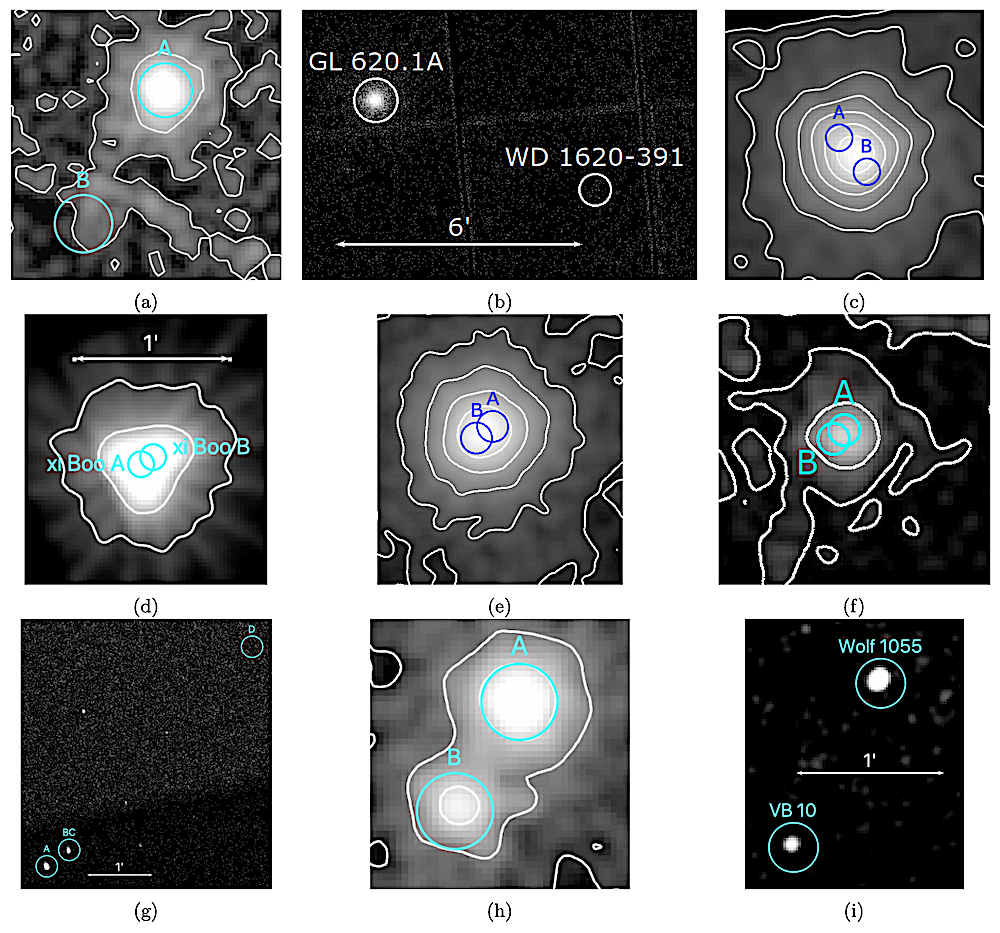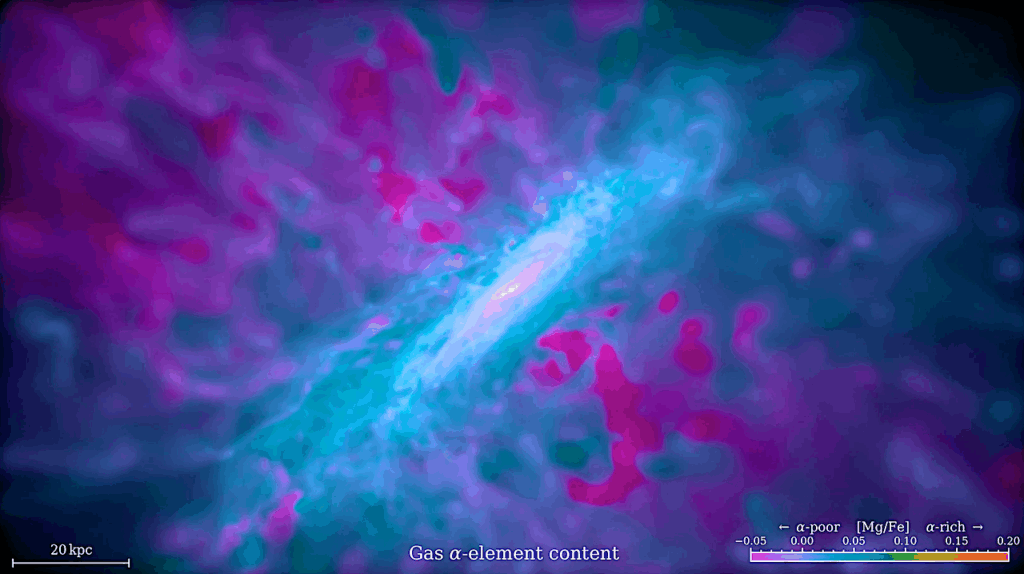X-ray Emission of Nearby Low-mass and Sun-like Stars with Directly Imageable Habitable Zones

Stellar X-ray and UV radiation can significantly affect the survival, composition, and long-term evolution of the atmospheres of planets in or near their host star’s habitable zone (HZ).
Especially interesting are planetary systems in the solar neighborhood that may host temperate and potentially habitable surface conditions, which may be analyzed by future ground and space-based direct-imaging surveys for signatures of habitability and life.
To advance our understanding of the radiation environment in these systems, we leverage ∼3 Msec of XMM-Newton and Chandra observations in order to measure three fundamental stellar properties at X-ray energies for 57 nearby FGKM stellar systems: the shape of the stellar X-ray spectrum, the luminosity, and the timescales over which the stars vary (e.g., due to flares).
These systems possess HZs that will be directly imageable to next-generation telescopes such as the Habitable Worlds Observatory and ground-based Extremely Large Telescopes (ELTs).
We identify 29 stellar systems with LX/Lbol ratios similar to (or less than) that of the Sun; any potential planets in the habitable zones of these stars therefore reside in present day X-ray radiation environments similar to (or less hostile than) modern Earth, though a broader set of these targets could host habitable planets.
An additional 19 stellar systems have been observed with the Swift X-ray Telescope; in total, only ∼30% of potential direct imaging target stars has been observed with XMM-Newton, Chandra, or Swift.
The data products from this work (X-ray light curves and spectra) are available via a public Zenodo repository (doi: https://doi.org/10.5281/zenodo.11490574).

Images of resolved and unresolved binary systems with XMM-Newton and Chandra. (a) XMM-Newton/PN image of υ And. The locations of the F8V star (A) and the M4.5V star (B) are shown by cyan circles (both with radii 10′′). The stars are separated by ∼0.9′ . (b) XMM-Newton image of GL 620.1A and the white dwarf WD 1620-391. No X-rays are detected at the location of WD 1620-391 in either observation. (c) The α Cen binary system as seen by the PN camera on XMM-Newton. The positions of the G2V star (A) and K1V star (B) are shown in blue circles (both with radii of 5′′ and separated by ∼18′′). (d) The ξ Boo binary system as seen by the MOS2 camera on XMM-Newton. The locations of the G8V star (A) and K4V star (B) are shown in cyan circles (both with radii of 5′′). (e) The 70 Oph binary star system as seen by the PN camera on XMM-Newton. The positions of the K0V star (A) and the K5V star (B) are shown in blue circles (both with radii of 5′′ and separated by ∼3.7′′). (f) The GL 783 binary star system as seen by the PN camera on XMM-Newton. The positions of the K3V star (A) and the M4.5V star (B) are shown in cyan circles (both with radii of 5′′ and separated by ∼2.6′′. (g) Chandra image of the GL 570 system. The primary GL 570A (K4V) is easily resolved from the binary red dwarf pair GL 570BC (M1.5V and M3V, respectively). Cyan circles have a radius of 10′′. The brown dwarf GL 570D is not detected in X-rays. (h) The 61 Cyg binary system as seen by the PN camera on XMM-Newton. The positions of the K5V star (A) and K7V star (B) are shown in cyan circles (both with a radius of 10′′ and separated by ∼12′′). (i) Chandra image of Wolf 1055 and VB 10 (both circles have radii of 10′′ and are separated by ∼1.2′ ). Some images have been smoothed for display purposes only; white contours indicate the intensity distribution of X-ray counts on the detector. — astro-ph.HE
Breanna A. Binder, Sarah Peacock, Edward W. Schwieterman, Margaret C. Turnbull, Azariel Y. Virgen, Stephen R. Kane, Alison Farrish, Katherine Garcia-Sage
Comments: Accepted to ApJS. 38 pages, 15 figures, 10 tables
Subjects: High Energy Astrophysical Phenomena (astro-ph.HE); Solar and Stellar Astrophysics (astro-ph.SR)
Cite as: arXiv:2407.21247 [astro-ph.HE] (or arXiv:2407.21247v1 [astro-ph.HE] for this version)
Submission history
From: Breanna Binder
[v1] Tue, 30 Jul 2024 23:42:25 UTC (12,743 KB)
https://arxiv.org/abs/2407.21247
Astrobiology, Exoplanet,








